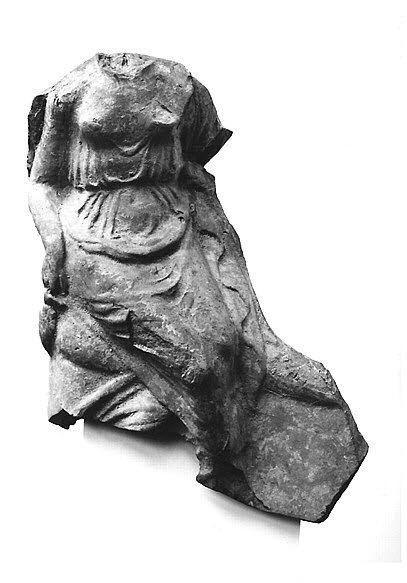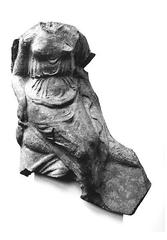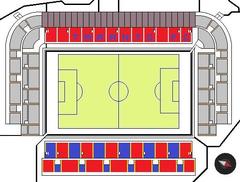
Taras Taranto Italy Visiting Hours, Tickets, and Historical Sites Guide
Date: 14/06/2025
Introduction to Taranto and Its Historical Significance
Taranto, known as “la città dei due mari” or “the city of two seas,” is a fascinating destination in southern Italy where layers of ancient Greek, Roman, medieval, and modern history merge with vibrant local culture. Founded in the 8th century BCE as Taras by Spartan colonists, Taranto quickly became a leading city of Magna Graecia, renowned for its strategic maritime position between the Mar Grande and Mar Piccolo. Its legacy as a naval power, symbolized by the iconic coinage of Taras riding a dolphin, is still palpable in its archaeological sites, museums, and lively waterfront. Over the centuries, the city experienced Roman conquest, Byzantine and Norman rule, and became a key naval base in modern Italy. Today, visitors can explore world-class attractions like the National Archaeological Museum of Taranto (MArTA), the imposing Castello Aragonese, and the atmospheric Old Town, making Taranto a must-see for history lovers and cultural explorers alike (traveltoitalyguide.com, celebritycruises.com, museotaranto.cultura.gov.it).
Contents
- Introduction
- Historical Overview
- Ancient Origins and Greek Heritage
- Magna Graecia’s Golden Age
- Roman Conquest and Transformation
- Medieval and Modern Developments
- Visiting Taranto: Practical Information
- Getting There
- Visitor Accessibility
- Opening Hours and Ticket Info
- Main Attractions
- National Archaeological Museum of Taranto (MArTA)
- Castello Aragonese
- Città Vecchia (Old Town)
- Ponte Girevole (Swing Bridge)
- Additional Highlights
- Culinary and Cultural Experiences
- Travel Tips
- Frequently Asked Questions (FAQ)
- Conclusion
- References
Historical Overview
Ancient Origins and Greek Heritage
Taranto originated as Taras, founded by Spartan settlers in the 8th century BCE. Its mythic foundation story tells of Taras, son of Poseidon, saved by a dolphin—a motif that still appears in local art and coinage (traveltoitalyguide.com). Taras flourished thanks to its prime coastal location, which fostered trade, agriculture, and naval prowess. By the 6th century BCE, it was among the most influential cities in Magna Graecia, attracting artisans, philosophers, and merchants (puglialy.com).
Magna Graecia’s Golden Age
The 4th century BCE marked Taras’ cultural and economic zenith, especially under the philosopher-statesman Archytas. The city became a hub of philosophy, science, and the arts, producing notable luxury goods and maintaining a strong navy. Its coins, featuring Taras atop a dolphin, became symbols of its power and mythic origins (celebritycruises.com).
Roman Conquest and Transformation
Taras’ prosperity brought it into conflict with Rome. After a series of wars and alliances—most notably with Pyrrhus of Epirus—Taras was captured by Rome in 272 BCE and renamed Tarentum (thecrazytourist.com). Although its commercial dominance waned, the city remained a key regional hub and was integrated into the Roman system (celebritycruises.com).
Medieval and Modern Developments
With the fall of Rome, Taranto endured centuries of changing rulers: Byzantines, Saracens, Normans (who built the Aragonese Castle), Angevins, Aragonese, and Spanish (wildtrips.net). It joined unified Italy in 1861 and grew into a major naval and industrial center, playing strategic roles in both World Wars. Recent decades have seen efforts to balance industrial growth with heritage preservation and environmental recovery (cnn.com).
Visiting Taranto: Practical Information
Getting There
- By Air: The closest airports are Brindisi (approx. 70 km) and Bari (approx. 110 km), both with shuttle and rail links (Puglia Guys).
- By Train: Taranto Centrale is on main Trenitalia routes from Bari, Brindisi, Lecce, and Naples (museotaranto.cultura.gov.it).
- By Car: Accessible via the A14 and SS106 highways. Parking is easier outside the historic center.
- By Bus: Regional and long-distance buses serve Taranto.
Visitor Accessibility
- Mobility: Museums like MArTA are fully accessible; historic sites and the Old Town have cobblestones and stairs, so check ahead for access info.
- Public Transport: AMAT city buses cover major districts; taxis and rental bikes are also available (The World Pursuit).
Opening Hours and Ticket Info
- MArTA (Museo Archeologico Nazionale di Taranto): Tue–Sun, 9:00–19:30. Tickets: €8 (adults), discounts for youth and seniors; free for EU citizens under 18/over 65. Guided tours available (museotaranto.cultura.gov.it).
- Aragonese Castle: Tue–Sun, 9:00–19:00. Tickets: €5 (adults), €3 (reduced), free for children under 12.
- Taranto Cathedral: Open daily, 8:00–12:30 and 16:00–19:30.
- Ponte Girevole: Open for pedestrian and vehicle access; free to cross.
- Taranto Underground Tours: Weekends only, approx. €10; limited accessibility.
Always check official websites for seasonal changes and special event closures.
Main Attractions
National Archaeological Museum of Taranto (MArTA)
A world-class museum, MArTA showcases Taranto’s history from prehistory through Roman times. Key highlights include:
- The “Ori di Taranto” (ancient gold jewelry)
- Greek vases, marble sculptures, and funerary artifacts
- Temporary and permanent exhibitions on Magna Graecia
Opening hours: Tue–Sun, 9:00–19:30; closed Mondays
Tickets: €8 adults; discounts and free entry for qualifying visitors
Accessibility: Wheelchair-friendly, with elevators and ramps
Official Museum Website
Castello Aragonese (Aragonese Castle)
This 15th-century fortress stands between the Mar Grande and Mar Piccolo, built atop earlier Greek and Byzantine structures. Explore:
- Towers and ramparts with panoramic sea views
- Guided tours (often in English) covering the castle’s military and prison history
Opening hours: Tue–Sun, 9:00–19:00
Tickets: €5 adults; discounts available
Accessibility: Some areas have stairs; inquire for details
Città Vecchia (Old Town)
The medieval island quarter, rich in atmosphere, features:
- The 11th-century Cathedral of San Cataldo, with Byzantine mosaics and medieval frescoes
- Artisan shops, traditional eateries, and historic piazzas
- The Diocesan Museum of Sacred Art (MUDI)
Best visited: Early morning or late afternoon for light and ambiance
Note: Some alleys may be difficult for wheelchairs/strollers
Ponte Girevole (Swing Bridge)
Completed in 1887, this engineering marvel connects the Old Town to the modern city. Try to witness the bridge opening for passing naval vessels—a unique local spectacle.
Additional Highlights
- Lungomare Vittorio Emanuele III: Palm-lined promenade with sea views
- Parco Naturale Regionale Terra delle Gravine: Hiking, birdwatching, and nature excursions
- Taranto Underground: Tours of Greek necropolises and Roman cisterns (weekends only)
Culinary and Cultural Experiences
- Seafood Specialties: Risotto alla Tarantina, cozze tarantine (mussels), polpo alla pignata (octopus stew)
- Markets: Mercato del Pesce (fish market) for fresh catches and lively atmosphere
- Workshops: Pottery-making in Grottaglie, tastings of local wine, cheese, and olive oil
- Festivals: Jazz festival in July, religious processions, and local food fairs
- Modern Culture: Contemporary art galleries and the Pino Pascali Museum
Travel Tips
- Best Time to Visit: Spring (April–June) and early autumn (September–October) offer pleasant weather and fewer crowds (thebitetour.com).
- Language: Italian is spoken, with English in tourist areas; learning basic phrases is helpful (The World Pursuit).
- Money: Euros; credit cards widely accepted.
- Safety: Taranto is generally safe; keep an eye on valuables and avoid unofficial guides.
- Dress Code: Modest dress in churches; comfortable shoes for walking.
- Accessibility: Museums are accessible, but historic streets may be challenging for those with limited mobility.
Frequently Asked Questions (FAQ)
Q: What are the main visiting hours for historical sites?
A: Most museums and monuments are open Tuesday to Sunday, 9:00–19:00; closed Mondays. Always check individual sites for updates.
Q: Can I buy tickets online?
A: Yes, MArTA and the Aragonese Castle offer online ticketing.
Q: Are guided tours available in English?
A: Yes, many sites offer tours in English; advance booking is recommended.
Q: Is Taranto accessible for families and visitors with disabilities?
A: Major museums are accessible; some historic areas have limited access due to uneven surfaces.
Q: What’s the best way to get around Taranto?
A: Walking is ideal for the Old Town and major sites; public buses and taxis are available for longer distances.
Q: What is the best time of year to visit?
A: Spring and early autumn provide the most comfortable weather and are less crowded.
Conclusion
Taranto is where ancient history and dynamic modern culture meet the sparkling blue of two seas. Whether you’re drawn to its archaeological wonders, atmospheric medieval streets, or vibrant culinary scene, Taranto offers a memorable experience for every traveler. Use this guide to plan your visit, navigate opening hours and ticketing, and immerse yourself in the city’s unique blend of traditions. For further inspiration, explore updated resources, download the Audiala app, and check official tourism sites for the latest events and travel tips.
References and Further Information
- Why is Taranto Called That? — Travel to Italy Guide
- Taranto, Italy - City Guide — Celebrity Cruises
- Day Trip to Taranto — PugliaLy
- 15 Best Things to Do in Taranto — The Crazy Tourist
- Top 10 Attractions to Visit in Taranto — Wild Trips
- Taranto Tourism and Industry — CNN Travel
- What to See in Taranto — Finestre sull’Arte
- Things to Do in Taranto — Triplyzer
- Official Website — Museo Archeologico Nazionale di Taranto (MArTA)
- Best Things to Do in Taranto — The Bite Tour
- History of Taranto — Puglia Guys
- Italy Travel Tips — The World Pursuit
- Italy Customs Info — VisaList

